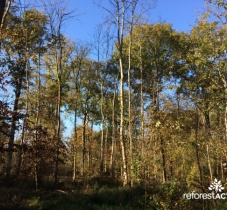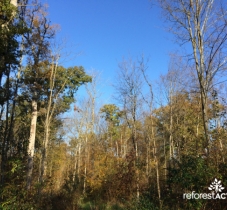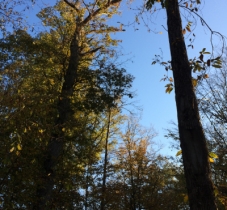Project description
Reforest'Action works in collaboration with the Forest Committee, to reforest a poor quality stand.
The project at a glance
- Number of trees to plant: 11,500
- Plantation area: 7 hectares
- Species planted: Oak (75%), various fruit trees (25%)
- Type of project: revitalization of a forest degraded by a disease
- Season of plantation: 2019-2020
Context
Chalara fraxinea is a pathogenic fungus species responsible for a fungal disease called chalarose. This disease, which appeared in Poland in the early 1990s, has spread rapidly in Europe since the early 21st century and affects ash trees (Fraxinus excelsior and angustifolia). The fungus is responsible for leaf wilt, stem necrosis and branch desiccation, which lead to the death of the affected individual.
According to INRA, the most serious diebacks are in the north and east of France and are progressing towards the west and south. In these regions, it is estimated that out of 100 living trees before the arrival of the disease, only one will remain completely free; the others will be more or less weakened and some will die.
The youngest are the most vulnerable. Indeed, after eight years of chalarose, only 15% of very young trees remain alive. Older individuals have reduced growth, but in the end tolerate this disease better and die much less.
The massif that Reforest'Action proposes you to repopulate in Chevry-Cossigny is mainly composed of ash trees suffering from chalarose. A dying coppice with no vigorous future is also present. The establishment of oaks and forest fruit trees will make it possible to create a massif of mixed species which can shelter a great biodiversity.












